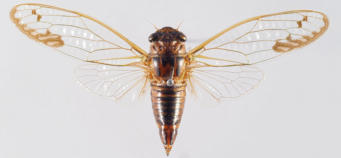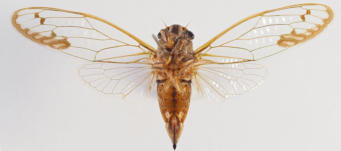Dinger
Kobonga oxleyi (Distant, 1882)
© Popple Creative Industries 2014–2025
Previously referred to as
Cicadetta oxleyi.
Species number (TNS):
160.
Fore wing length:
21–26 mm.
Distribution and seasonality:
Subhumid and semi-arid areas
from near Herveys Range wesof
Tonwnsville south-west to
Adavale and east to Jondaryan in
Queensland. Populations then
occur patchily south and west
through inland New South Wales
to the border region of South
Australia and Victoria. Adults
occur from September to
February.
Notable localities:
Glenmorgan, Southwood
National Park.
Habitat:
Woodland and acacia-dominated
scrubland.
Calling song and behaviour:
A series of strong "zeeps", similar
to the call of a Paperbark Cicada,
followed by a loud "Ding-ding-
ding-ding-ding-ding" sequence
before immediately repeating.
Singing occurs at intervals
throughout the day and also
prominently at dusk. Adults
typically sit on the upper
branches of trees, particular
acacias.
Similar species:
Moree Dinger, Slow Dinger.
Habitat

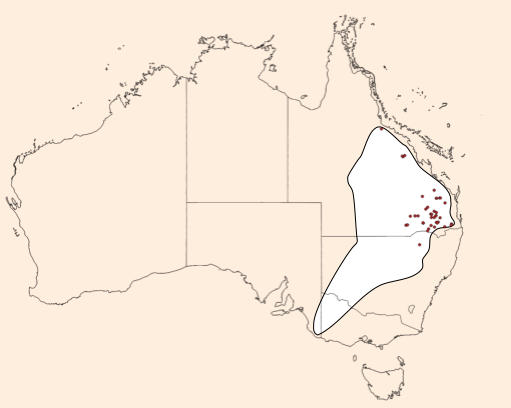


dr-pop.net database record
Currently known extent
Male


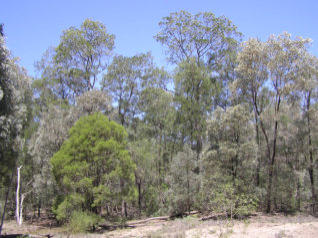
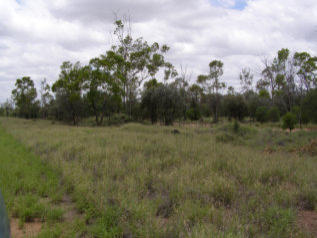
Female
